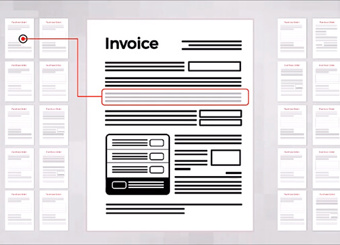Top five findings from the 2018 ePayables report
Ardent Partners – a research and advisory firm focused on supply management strategies, processes, and technologies – recently published their annual “State of ePayables Report.” Based on a survey of nearly 200 AP and finance leaders and professionals, the report captures their experiences, performance, and perspectives on the accounts payable process of today.
The ongoing transformation of AP teams
The transformation of AP from a back-office function to a more strategic business unit and contributor to overall success is a clear theme throughout the ePayables report. The survey shows that leading AP teams have already started to leverage technology tools and ideas to increase their strategic value to the rest of the organization. In particular, AP automation solutions enable access to the data that sits in the invoice management process, including critical data points related to spend, cash flow, and compliance to supplier or payment terms. With this data at hand, the AP team can provide greater value to internal stakeholders by delivering improved reporting, insights, and intelligence.
Removing and automating time-consuming, manual tasks in the AP department is the obvious first step of this transformation. But AP automation is no longer the end goal, it’s instead the first step on a long journey towards becoming a strategic business partner. The report highlights the fact that accessing, crunching and consolidating the data that sits in the accounts payable process is the silver bullet that will help AP teams move to the next level.
“Ardent Partners believes that AP’s ability to leverage its data to provide actionable information to key stakeholders is the “golden goose” the organization can use to impact enterprise operations and results.” (The State of ePayables 2018)
AP’s transformation has already taken significant steps: the research shows that 52% of organizations perceive the AP function as either “very” or “exceptional” valuable to organizational operations. The adoption of automation technology has contributed to an improved perception of AP and its worth to the organization, encouraging the C-suite to invest more in this department.
Get on the technology train
For those companies who have not yet adopted AP automation technology now is the time. According to Ardent Partner’s research, 59% of the surveyed companies expect to have “full automation of all AP processes” in place within the coming two years whereas 24% believe it will take them five years to get there.
The survey also shows that companies now expect more from technology - merely digitizing a formerly manual workflow will not be enough. Today, AP teams want to leverage smart technology including machine learning and robotic process automation (RPA) to increase the level of automated and touchless invoice processing.
The innovative AP automation solutions of today can offer much more than a digital workflow. So it’s crucial for AP teams to do a thorough investigation of the market and work with the IT team and other business functions to understand how the AP automation solution fits into the overall digital transformation strategy and ensure it serves the various needs of the business.
“The bridge to an intelligent AP function is not built on a single technology or strategy, but rather a series of new innovations and systems that speak to each other in near real-time, producing actionable intelligence across a wide range of corporate arenas.” (The State of ePayables 2018)
Driving technology change may be easier said than done. Many AP organizations find themselves stuck with legacy systems that don’t provide the level of automation or data insights needed to support the business of today. In this case, it is crucial to team up with the IT organization and build the business case for modern, cloud-based AP automation technology that will drive long-term efficiency and value to the entire organization.
Invoice exceptions the hurdle for true automation
Despite the rapid digital transformation and increased usage of automation technology in AP, Ardent Partners’ research shows that “24% of the average AP staff’s time is spent working directly with suppliers to fix invoice, processing or payment errors.” And 41 percent of organizations state exceptions are a top challenge in 2018, creating bottlenecks in the overall accounts payable process as staffers need to hunt down information and resolve issues. This manual task is a huge hurdle to the overall transformation of AP, disrupting the journey towards full automation, not to mention the waste of time for valuable AP resources.
Surprisingly, the survey shows that the average invoice exception rate has been increasing these past years, up by as much as 26% in 2018 compared to 2017. This trend may be a sign that many companies are stuck with basic, first-generation AP solutions. While many AP automation tools can help companies get rid of the repetitive and manual tasks of keying in invoice data, coding and distributing invoices, they will never reach true automation unless getting rid of those errors causing manual investigations and work.
Modern, advanced AP solutions focus on removing exceptions altogether by helping identify deviating invoice lines and suggesting a business rule that will automate the handling of this type of deviation moving forward. This requires advanced data capture and matching capabilities enabling invoice data to be extracted and matched with purchase order data on a detailed level, preferably line by line. Then, and only then, can true automation and touchless invoices processing - as in no human intervention – become a reality.
What makes an AP team best-in-class
Ardent Partners present industry benchmarks on many accounts payable KPIs revealing the performance level of average as well as best-in-class AP teams. In general, the performance of the average AP function is improving year-over-year. Nearly all metrics show improved results compared to 2017, except for the increase in invoice exceptions mentioned above.
The report highlight four areas that differentiate the high performing AP teams from the average.
- High usage of AP automation technology. Best-in-class companies are more likely to adopt technology for a range of the function’s need including scanning, data capture, e-invoicing and automated workflow including invoice matching.
- A focus on speed. Leaders work hard to accelerate the AP process by removing friction, driving efficiency and operational excellence. 92% of best-in-class companies have standardized AP processes across the enterprise.
- Fight against exceptions. Leading AP teams work actively to reduce the number of exceptions that need to be managed manually. For example, 87% of best-in-class companies have access to 2- or 3-way matching capabilities within their AP automation solution.
- Leverage AP process analytics. Measuring core accounts payable KPIs such as the touchless ratio is key to drive continuous improvements of the AP process efficiency. Many best-in-class AP teams understand this but still only 50% can measure key AP metrics in their current AP automation solution.
Looking into the crystal ball: the future of AP
A common view is digital tools will gain increased importance in most business functions. But what do AP professionals think about the future? The ePayables survey includes questions around how AP professionals believe their role will develop in the next 2-5 years.
Within two years, the majority of surveyed companies expect to see increased collaboration with other business functions, such as procurement and treasury, to provide greater service and value to the overall business. They also expect a more innovation-ready corporate culture that will support further investment in technology to support time and money-savers such as advanced AP automation and digital B2B payments.
In the five-year outlook survey, respondents foresee a greater focus on providing an improved enterprise experience, similar to the consumer experience you would expect from an online service or tool. This includes user-friendly tools for mobile invoice approvals as well as on-demand insights and reports.
Overall, The State of ePayables 2018 report shows a very positive image of the accounts payable function today. To some extent, the future of AP is already here. Digital transformation is happening right now, and there are tools available to enable a highly automated and touchless accounts payable experience. Now it’s up to AP teams to embrace the technology and transform their function to the important center of business that it should be. As modern automation technology supports increase efficiency as well as access to data insights the AP team can provide superior service to the rest of the organization.






